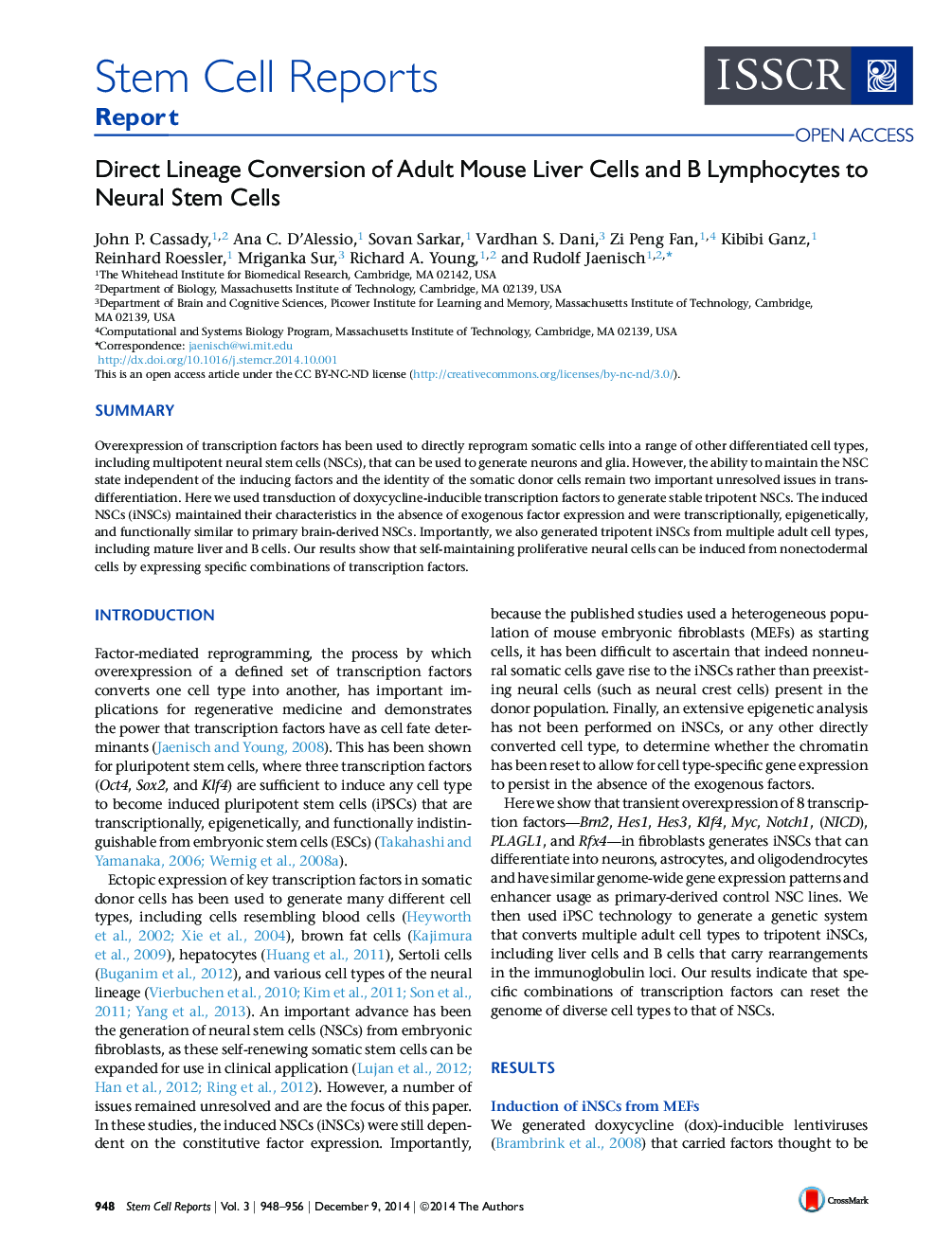| Article ID | Journal | Published Year | Pages | File Type |
|---|---|---|---|---|
| 2093675 | Stem Cell Reports | 2014 | 9 Pages |
•Transgene-independent tripotent neural stem cells are induced from somatic cells•H3K27ac enhancer profiling shows iNSCs are epigenetically reprogrammed genome-wide•Adult liver and B cells are lineage converted to iNSCs using a “secondary” system•iNSCs derived from B lymphocytes have immuloglobulin loci rearrangements
SummaryOverexpression of transcription factors has been used to directly reprogram somatic cells into a range of other differentiated cell types, including multipotent neural stem cells (NSCs), that can be used to generate neurons and glia. However, the ability to maintain the NSC state independent of the inducing factors and the identity of the somatic donor cells remain two important unresolved issues in transdifferentiation. Here we used transduction of doxycycline-inducible transcription factors to generate stable tripotent NSCs. The induced NSCs (iNSCs) maintained their characteristics in the absence of exogenous factor expression and were transcriptionally, epigenetically, and functionally similar to primary brain-derived NSCs. Importantly, we also generated tripotent iNSCs from multiple adult cell types, including mature liver and B cells. Our results show that self-maintaining proliferative neural cells can be induced from nonectodermal cells by expressing specific combinations of transcription factors.
Graphical AbstractFigure optionsDownload full-size imageDownload as PowerPoint slide
